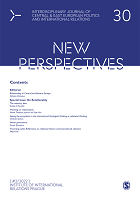History Without Engines
History Without Engines
Author(s): Daniel Zamora VargasSubject(s): Political Philosophy, Political history, Recent History (1900 till today), Marxism
Published by: SAGE Publications Ltd
Keywords: political history; political theory; 20th century; marxism; liberalism;
Summary/Abstract: In the autumn of 1901, after spending three years in exile in a peasant’s hut in Siberia, Lenin began writing what would become his most influential book: What Is To Be Done? (Lenin, 1902) “Without revolutionary theory there can be no revolutionary movement,” the Russian Bolshevik famously argued in the first chapter of his pamphlet. But more than a plea for the importance of ideas in the making of history, Lenin’s argument was essentially about the leading role of the party in the revolution. The workers themselves, he thought, couldn’t reach spontaneously the consciousness of their historic mission. Revolutionary theory could then only “be brought to [the workers] from without,” “from outside the sphere of relations between workers and employers” (Lenin, 1902: 48). Behind the abstract laws of historical materialism, Lenin’s task was, as the Belgian Marxist Marcel Liebman once wrote, to create the “instrument” through which the revolutionary project could be realized (Liebman, 1973: 15). Historical turns required organizations that could channel collective struggles into specific directions. In order to be more than “just one fucking thing after another,” to quote Alan Bennett, history had to be coerced into grand narratives. The flow of events could only be shaped by collective and conscious actors. Class struggle was the steam of History but it needed an engine to move forward.
- Issue Year: 30/2022
- Issue No: 4
- Page Range: 406-409
- Page Count: 4
- Language: English
- Content File-PDF

